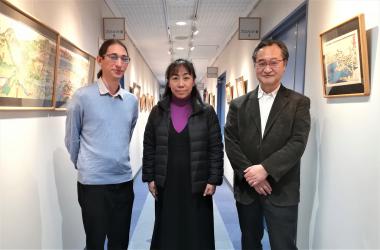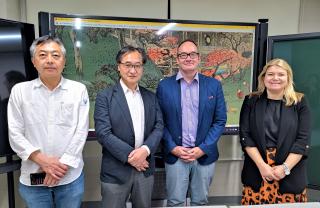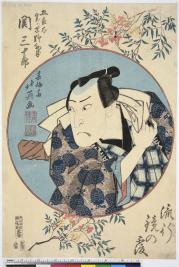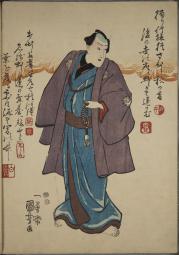-
2024年3月23日(土)に「第13回「知識・芸術・文化情報学研究会」を開催いたします。それに伴い、発表者の募集をいたします。奮ってご応募ください。
開催日および実施方法: 開催日:2024年3月23日(土)
会場:立命館大学 大阪梅田キャンパス(大阪梅田駅前)
大阪市北区小松原町2-4 大阪富国生命ビル5階
※時間は発表者数により調整します。
※「対面およびオンライン(Zoom)によるハイブリッド方式」または「完全オンライン開催(Zoom)」となる可能性があります。応募方法: 2024年2月5日(月)までに、発表申込みフォーム https://forms.gle/J5JAzzRFuv1mbPHo8 より申し込むこと。 発表時間: 質疑込み20分程度。ただし発表者数により調整する。(発表時間および発表資料提出の要領は締め切り後、発表者に連絡します。) 参加費: 無料 研究分野: 1. 情報技術を使った芸術・文化分野やその他の分野の研究
2. 芸術・文化やその他の分野に応用できる情報技術の研究研究発表の内容例: 1. 芸術分野やその他の分野の情報・知識の構造解析、モデル化、可視化、知識発見
2. 芸術分野やその他の分野の情報・知識の表現、生産、組織化・DB構築、検索、提供
3. 電子出版、電子図書館、電子博物館・美術館
4. 芸術分野やその他の分野の用語、シソーラス
5. 芸術分野やその他の分野の情報・知識の流通と知的所有権
6. オープンデータ、データパブリッシング、リンクトデータ
7. インターネット、セマンティックウエブ、Web x.0 など
8. その他、広く文化を対象とした情報・知識に関連する諸研究・開発主 催: 知識・芸術・文化情報学研究会
世話役〔五十音順〕:赤間 亮(立命館大学)、阪田真己子(同志社大学)、田窪直規(近畿大学)、村川猛彦(和歌山大学)共 催: アート・ドキュメンテーション学会関西地区部会、情報知識学会関西部会 協 力: 立命館大学アート・リサーチセンター 文部科学省 国際共同利用・共同研究拠点「日本文化資源デジタル・アーカイブ国際共同研究拠点」 問い合わせ: kacimeeting+2024■gmail.com (■を@に変えて下さい)
「知識・芸術・文化情報学研究会」詳細: 昨今のデジタル・情報環境の急速な進展とともに、学術分野にも「情報」や「デジタル」を意識した分野横断型の研究が多く見受けられるようになってきました。大学の教育・研究活動においても、この傾向は強まっており、これに関連する教育プログラムやコースの活動が充実しています。
時代に即した新しい研究テーマのもと、このような課程で学ぶ学部生・大学院生や若手研究者が学術的な交流をする機会へのニーズはますます大きくなっています。
そのため、芸術・文化、およびその他の関連する分野の情報・知識研究に興味のある大学院生および若手研究者を主に意識し、発表・交流のための場として「知識・芸術・文化情報学研究会」を2011年度に発足させ、これまで12回の研究集会を開催しました。
本会は、異分野の人的交流を通じて、参加者相互が新たな研究テーマや方法を発見できる場と位置づけており、学会発表とはひと味違う萌芽的・冒険的な発表も歓迎します。
2023年12月1日、Kazuko Kameda-Madar教授(エルサレム・ヘブライ大学 客員教授)がアート・リサーチセンター(ARC)を訪問されました。
赤間亮教授(文学部・教授/ARCセンター長)、Seifman教授(ARCリサーチマネージャー)とデジタル人文学の研究における連携について意見交換を行いました。
2023年11月29日(水)18:00より、Web配信にて第126回国際ARCセミナーを開催いたします。
プログラムは下記となります。講師:タイモン・スクリーチ氏(国際日本文化研究センター(日文研)研究部 教授)
タイトル:「日光東照宮陽明門前のオランダ灯籠の新考」
日時:2023年11月29日(水)18:00~19:30
参加:Zoom配信(関係者のみ・予約不要)

立命館大学ARC・国際共同利用共同研究拠点
チューターによる添削指導がある
くずし字翻刻システムを使った古文献解読力錬成講座2023年度の「チューター添削指導のあるくずし字解読力錬成講座」を実施します。
この講座は、ARC古典籍・浮世絵・古文献データベース、ならびに「くずし字翻刻支援・教育システム」を使ってオンライン上で行われるもので、いつでも、どこでも、自由に時間を使って訓練ができます。特徴は、AIによるサジェスト機能が使えること、熟練のチューターによって添削指導を受けられることです。単発で行われるくずし字講座とは違い、自身で作品・資料を読み進めながら解読能力の訓練をしていくことができます。
初級・中級レベルの方々は勿論、特定の作品・作品群の翻刻プロジェクトへの支援を希望する場合も参加できます。
参加費は無料です。
なお、本講座は、令和 5(2023)年度「国際日本研究」コンソーシアム公募事業の支援を受けています。
参加希望の方は次のフォームからお申し込みください。
↓↓↓
締め切 2023年12月11日(月)12時(JST)
【実施内容詳細】
期間:2023年12月20日から2024年3月15日まで
使用言語:日本語
対象:
1、くずし字で書かれた文献を解読していきたい初心者から中級者(定員:25名)
2、くずし字翻刻システムを使い、自身のプロジェクトを推進したい個人・グループ
(個別添削はありませんが、難読文字等の相談ができます。定員:5名・グループ)スケジュール
12月15日頃 採択通知 12月20日(JST 9時・20時) 講座の概要・システム説明会(オンライン・見逃し配信があります) 1月、2月中 随時、ミニ講習会を実施します 3月下旬 クロージング・ミーティング開催 【連絡先】
立命館大学アート・リサーチセンター
国際卿共同利用共同研究拠点 事務局
Email: r-darc@st.ritsumei.ac.jp
Tel: +81-75-465-84762023年11月20日、後藤真教授と永井正勝教授(大学共同利用機関法人 人間文化研究機構)がアート・リサーチセンター(ARC)を見学されました。
ARCの建物や施設を見学されたほか、赤間亮教授(文学部・教授/ARCセンター長)、矢野圭司教授(文学部・教授/ARC副センター長)とデジタル人文学の研究における連携について意見交換を行いました。
2022年度より立命館大学アート・リサーチセンターの国際共同利用・共同研究拠点「日本文化資源デジタル・アーカイブ国際共同研究拠点(ARC-iJAC)」の実施する「国際共同研究 公募要項〔研究費配分型〕(B) 国際個別テーマ型」に採択されて以来、スペイン・マドリード・コンプルテンセ大学のピラール・カバナス准教授率いる研究チームは、コンプルテンセ大学が所蔵する浮世絵をデジタルアーカイブ化する国際共同研究プロジェクトを実施しています。
プロジェクトの成果のひとつとして、死絵をテーマにしたデジタル展覧会「In memoriam. Japanese shinie prints」が公開されました。以下のURLからご覧いただけます:
https://patrimoniodigital.ucm.es/s/shinie-en/page/welcome
本展覧会の目的は、コンプルテンセ大学所蔵の死絵をもとに、19世紀半ばに広まった死絵というジャンルの意味と社会文化的背景を、解き明かすことです。
ARC浮世絵ポータルデータベースでは、マドリード・コンプルテンセ大学所蔵の浮世絵コレクションを全てご覧いただけます。
デジタルアーカイブの組織間リンケージにより、メタデータや作品分析を含む、国内外の研究者のコンプルテンセ大学コレクションへのアクセスを促進しています。
2023年11月8日(水)18:00より、Web配信にて第126回国際ARCセミナーを開催いたします。
プログラムは下記となります。講師:Ellis Tinios氏(リーズ大学名誉講師)
タイトル:「Hokusai the Alchemist: an exploration of sources for his book illustrations」
日時:2023年11月8日(水)18:00~19:30
参加:Zoom配信(関係者のみ・予約不要)
※ARCメンバー以外の方は Youtubeよりご参加いただけます。こちらからご覧下さい。
2023年11月7日、Shi-Chi Mike Lan教授(台湾国立政治大学 華人文化元宇宙研究中心 副主任)とChih-Ming Chen教授(台湾国立政治大学 華人文化元宇宙研究中心 主任)がアート・リサーチセンター(ARC)を見学されました。
ARCの建物や施設を見学されたほか、赤間亮教授(文学部・教授/ARCセンター長)、矢野圭司教授(文学部・教授/ARC副センター長)とデジタル人文学の研究・教育における連携について意見交換を行いました。

2023年11月6日、グレーム・アール教授(ロンドン⼤学東洋アフリカ研究学院(SOAS)⼈⽂学部⻑)がアート・リサーチ・センター(ARC)を見学されました。
ARCの建物や施設を見学されたほか、赤間亮教授(文学部・教授/ARCセンター長)、矢野圭司教授(文学部・教授/ARC副センター長)とデジタル人文学の研究・教育における連携について意見交換を行いました。
赤穂市「忠臣蔵」浮世絵デジタル展示室:
https://www.arc.ritsumei.ac.jp/lib/vm/akochushingura/ 赤穂市「忠臣蔵」浮世絵デジタル展示室では、第3回展覧会「上方の忠臣蔵浮世絵」を公開しました。
赤穂市「忠臣蔵」浮世絵デジタル展示室では、第3回展覧会「上方の忠臣蔵浮世絵」を公開しました。この展覧会は、令和4年度に赤穂市立歴史博物館で開催された特別展「上方の忠臣蔵浮世絵」展をベースにして、赤穂市「忠臣蔵」浮世絵データベース収録作品に立命館大学アート・リサーチセンター所蔵作品を加えて再構成したものです。
大坂・京都といった上方では、一枚摺の浮世絵が寛政年間(1789~1800)から出版され始めますが、それから幕末までのおよそ70年の間に、忠臣蔵関係の芝居が上演されたのは200回を超えます。それに合せて、数多くの役者絵が描かれました。
上方絵には、江戸絵とは異なる独自性があり、その個性豊かな作品世界は欧米でも高く評価されています。本展では、役者絵・芝居絵を中心に、おもちゃ絵などにも描かれた、上方での忠臣蔵文化の展開の一端をご覧いただけます。
令和元年度にオープンした第1回展覧会「討入り図の諸相」、令和2年度オープンの第2回展覧会「義士の頭領・大星由良之助」とあわせて、是非ご鑑賞ください。














